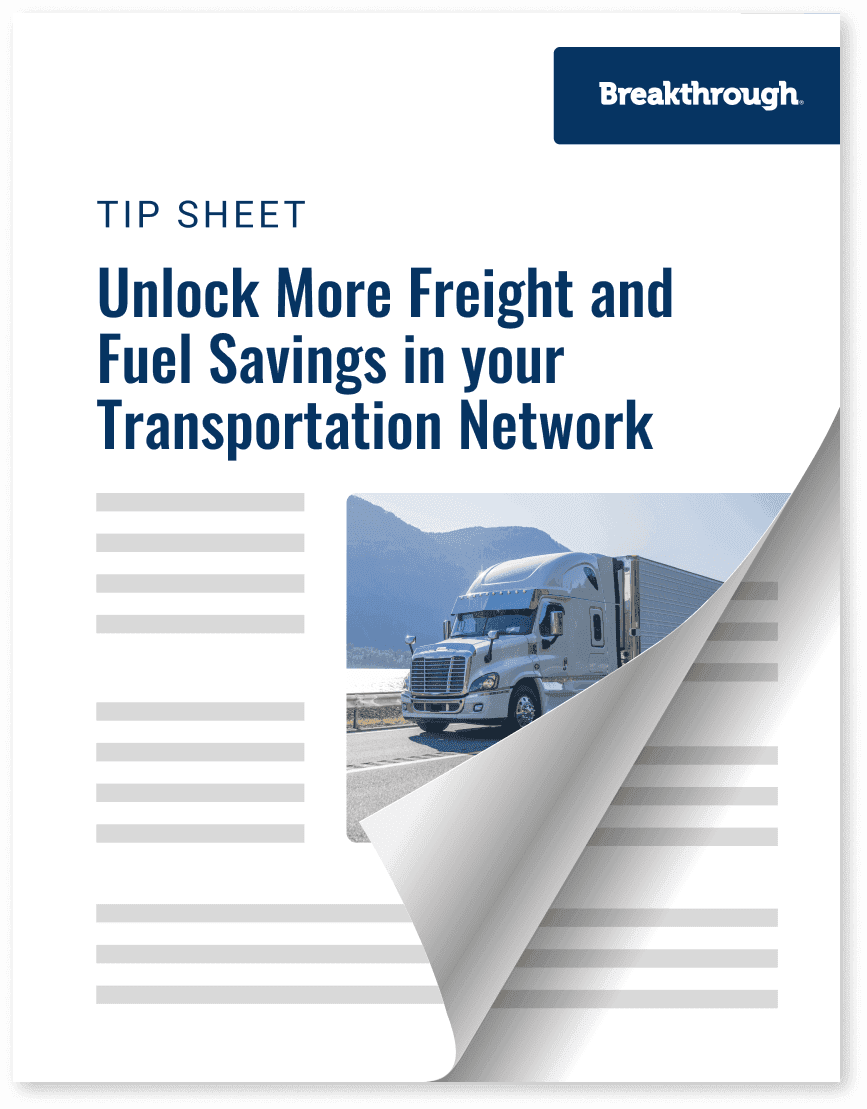Unlock More Freight & Fuel Savings in your Transportation Network

Trending
Top Posts
Market Events
Geopolitical Risks: Navigating Volatility in Energy Markets
4 min read
October 18, 2024
Sustainability and Tech
What Is Logistics Transportation Management? 4 Advantages for Success
4 min read
October 15, 2024
Sustainability and Tech
AI in Logistics: How Shippers Can Uncover Freight Efficiencies
4 min read
October 14, 2024

4 min read
November 29, 2023

Share:
In today’s evolving macroeconomic climate, shippers need to ensure their transportation teams have access to the right technology and know how to effectively use it — especially if they hope to achieve critical priorities like making progress on their sustainability strategy.
But how can shippers tell if they have the right technology stack, and whether they’re deriving maximum value from it? It comes down to implementation, building a technology-first culture, and adoption.
In addition to investing in the right technology and participating in training, the most savvy shippers cultivate a technology-first mindset that enables them to achieve high-level business objectives, maximizing transportation technology adoption and ROI.
Your transportation technology stack is foundational for optimizing your network and achieving your business objectives as markets and conditions evolve. And it’s easy to fall back on comfortable strategies and familiar tools that have proven successful. If it’s not broken, why fix it, right?
But that mindset limits your potential for growth and innovation. The status quo limits your ability to improve your transportation network and adapt to market dynamics. As a proactive leader, it’s important to stay informed about the range of possibilities that innovative technology enables, especially as AI and machine learning begin to mature and unlock new use cases.
While AI and machine learning models are still in their infancy, early applications can already run hundreds of thousands of scenarios to identify opportunities to optimize your network. Gone are the days of constrained route modeling due to computing capacity — it’s possible to perform vast amounts of exploration to inform the decision-making process, a critical capability for navigating unexpected events with agility.
Fostering a culture of technological innovation, where experimentation and exploration are encouraged, empowers teams to embrace and fully adopt new solutions, maximizing your technology investment's ROI while keeping you ahead of the competitive curve.
1. Incentivize tech adoption
Think back to the last time your company adopted a major technology tool. How many of those tool’s capabilities and features are you actually using today? It’s often the case that companies only use a fraction of the capabilities of a technology investment.
Most of us have encountered this scenario at some point in our careers. It’s not cost effective to use just 20% of the tech power you’re paying for, but it’s an easy trap to fall into when you don’t dedicate adequate time and focus to deployment, training, and experimentation.
As a leader, it’s equally important to set aggressive transportation goals that incentivize individual contributors to use all of the available technology resources. For example, if you adopt an emissions tracking solution but fail to create KPIs for emissions reduction, your transportation procurement team will continue to prioritize cost over sustainability in all scenarios.
Adopting new tools should always be accompanied by a conversation about new KPIs to measure their value.
2. Evaluate solution performance
A transportation technology stack focused on supporting supply chain optimization should achieve two things:
In both cases, it’s essential to have access to comprehensive and relevant data for a streamlined view of your network. Your solutions should seamlessly integrate with one another, and consolidate and structure data for accuracy and cleanliness.
3. Lean on industry experts for support
Look for a true transportation management technology partner, not just a software provider. You need a partner that can complement your team’s strengths, and serve as an extension of your internal team to execute tasks and provide support.
Top technology partners should also offer access to industry insights and data, so you can track your performance against the competitive landscape and provide guidance as you adapt strategies and refine your transportation network.
Remember, your team is the expert on your network and strategies, but your partners are experts in the technology they provide and the ecosystem of data they support. Leaning on their expertise is the best way to maximize the ROI on your technology investment.
With the right transportation management technology partner, you can empower your team with streamlined processes, actionable recommendations, and complete network visibility to address critical challenges and drive the organization toward greater efficiency and success.
Ready to take the next step toward optimizing your shipping technology stack? Get in touch to learn how Breakthrough’s suite of transportation management technology solutions can help your team drive growth and innovation.

4 min read
October 18, 2024
Explore how geopolitical tensions and hurricane season are driving energy market volatility in 2024, significantly impacting oil prices and routing guides.
Read more
4 min read
October 15, 2024
Discover the benefits of using a logistics transportation management provider to streamline operations, enhance visibility, and meet sustainability targets.
Read more
4 min read
October 14, 2024
Explore how AI in logistics is advancing the supply chain through route optimization, market forecasts, and benchmarking, providing shippers innovative solutions.
Read more